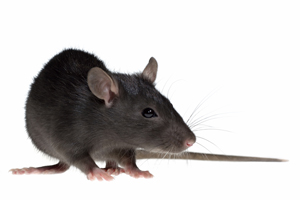Name: Black Rat – Rattus rattus.
Lifecycle
Gestation: 21-22 days
Weaned: 3-4 weeks
Sexually Mature: 12-16 weeks
Lifecycle
Gestation: 21-22 days
Weaned: 3-4 weeks
Sexually Mature: 12-16 weeks
Description
Large ears and a slender body, with a tail longer than the combined length of the head and body. Adult R.rattus will weigh 100-300g (with the average being 225g) and have a combined head and body length of 150-220mm. Although classically depicted as being black, R.rattus can range in colour from light brown to black, making fur colour no guarantee of species.
Show a slight Neophobic (fear of new objects) response, although the severity depends largely on location and population.
Large ears and a slender body, with a tail longer than the combined length of the head and body. Adult R.rattus will weigh 100-300g (with the average being 225g) and have a combined head and body length of 150-220mm. Although classically depicted as being black, R.rattus can range in colour from light brown to black, making fur colour no guarantee of species.
Show a slight Neophobic (fear of new objects) response, although the severity depends largely on location and population.
Habitat
Equally at home on the ground or at height, R.rattus is an adept climber. Although usually found in trees, in the urban environment they will be frequently found in a building’s roof or attic space. In the absence of predators or competition they will infest at ground level, but they seldom burrow.
Equally at home on the ground or at height, R.rattus is an adept climber. Although usually found in trees, in the urban environment they will be frequently found in a building’s roof or attic space. In the absence of predators or competition they will infest at ground level, but they seldom burrow.
Signs of Infestation
• Sightings – The surest sign of any infestation.
• Smell – Rodents produce a distinctive odour in their urine. This can be particularly pronounced if the population is confined to an enclosed space or is very large. R.rattus will over time build urine pillars by many individuals constantly urinating in the same place.
• Droppings – Are on average 9mm long, thin, and described as being banana shaped.
• Runs – Rodents reuse the same runs to such an extent that depressions in the earth and paths cleared of vegetation can be clearly seen leading away from burrows.
• Smears – The greasy coats of rodents will leave a tell-tale smear on the surfaces the routinely run along. R.rattus can be distinguished from other species by the broken or intermittent smears as a result of their increased agility.
• Damage – Perhaps one of the clearest signs of rodents is the damage they cause by their perpetual need to gnaw.
• Sightings – The surest sign of any infestation.
• Smell – Rodents produce a distinctive odour in their urine. This can be particularly pronounced if the population is confined to an enclosed space or is very large. R.rattus will over time build urine pillars by many individuals constantly urinating in the same place.
• Droppings – Are on average 9mm long, thin, and described as being banana shaped.
• Runs – Rodents reuse the same runs to such an extent that depressions in the earth and paths cleared of vegetation can be clearly seen leading away from burrows.
• Smears – The greasy coats of rodents will leave a tell-tale smear on the surfaces the routinely run along. R.rattus can be distinguished from other species by the broken or intermittent smears as a result of their increased agility.
• Damage – Perhaps one of the clearest signs of rodents is the damage they cause by their perpetual need to gnaw.
References
BPCA Manual, Chapter 6.
BPCA Manual, Chapter 6.

